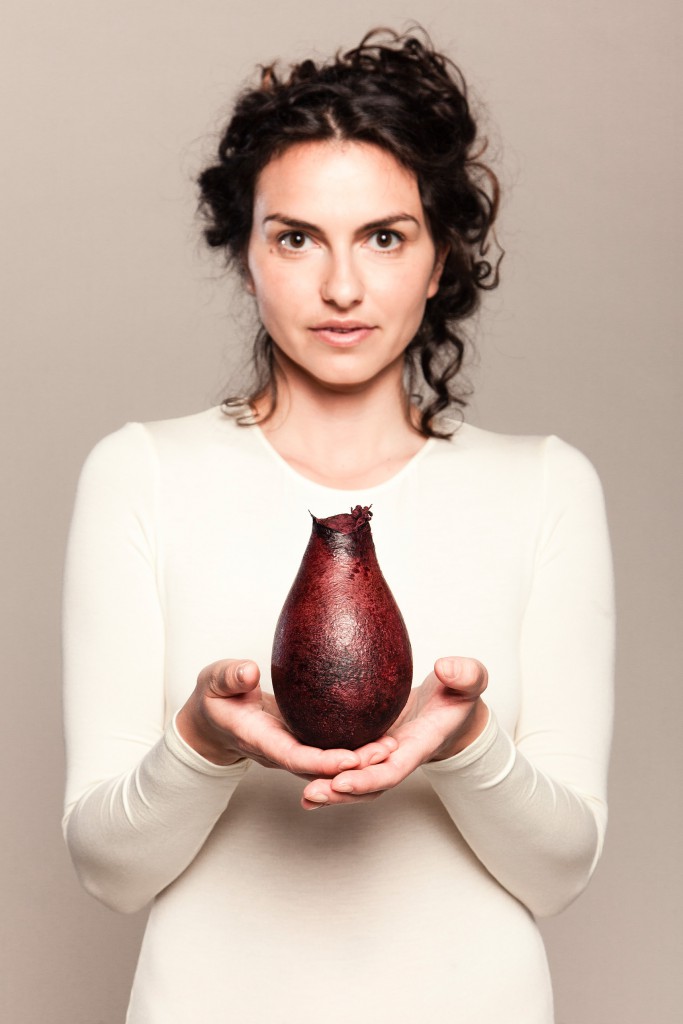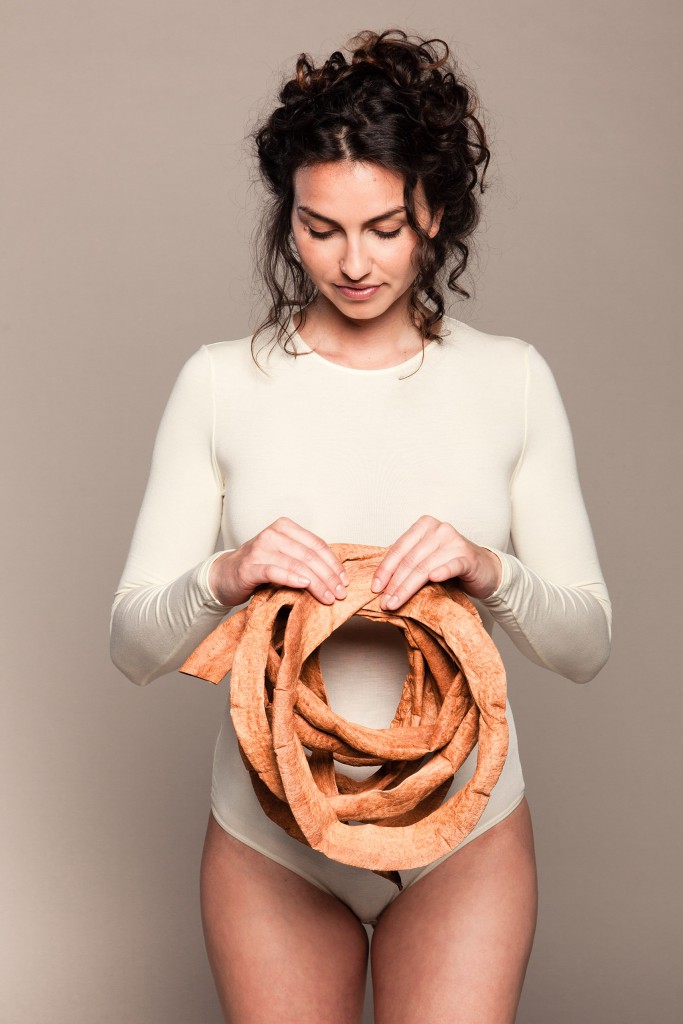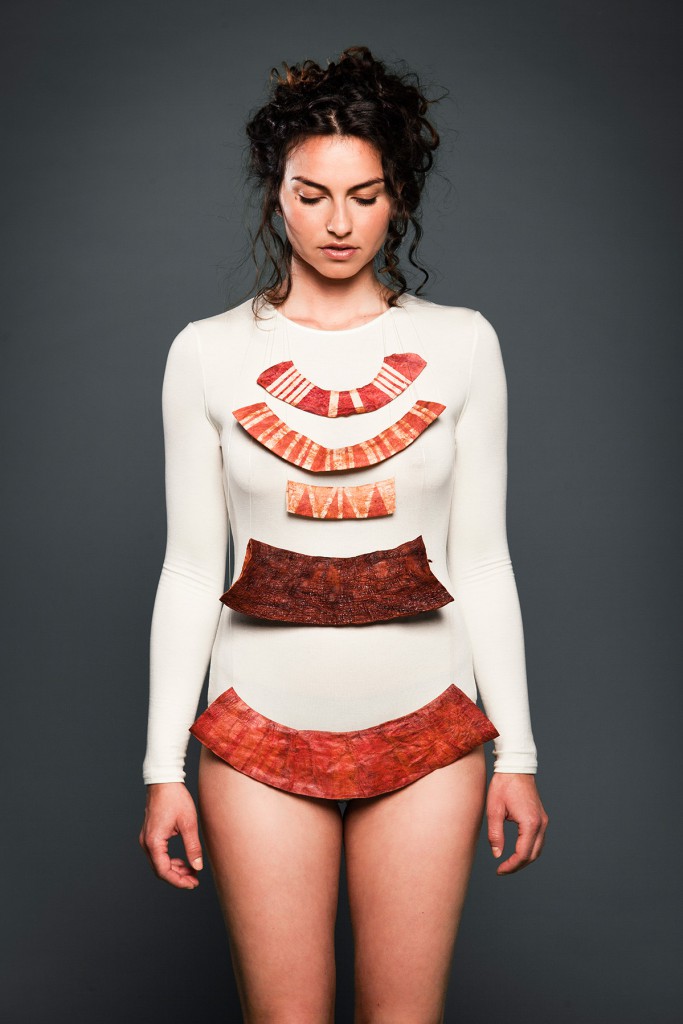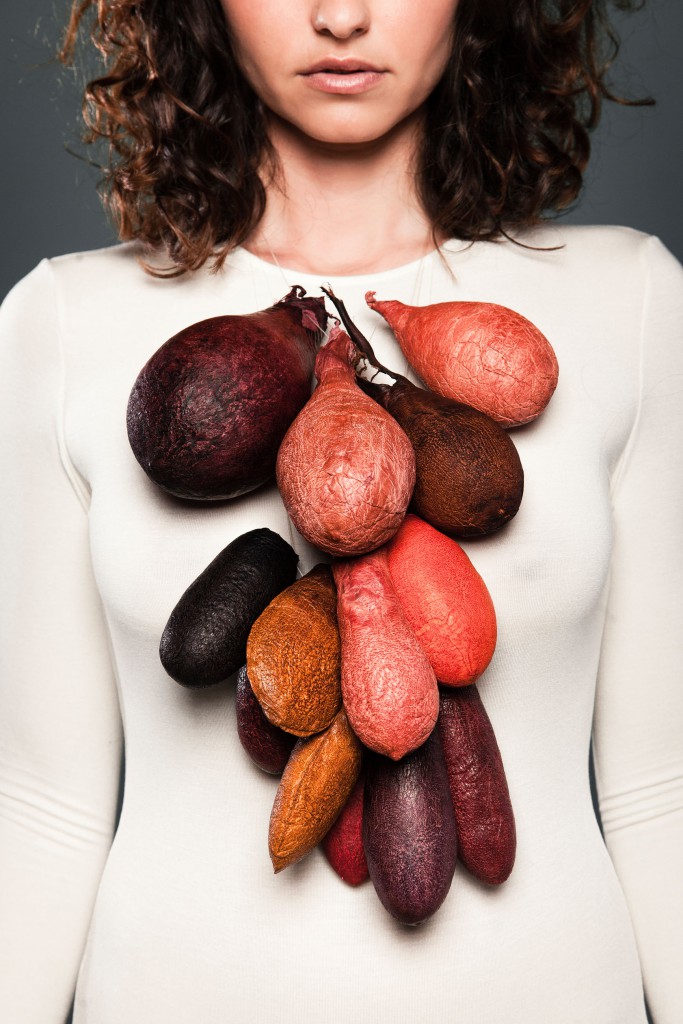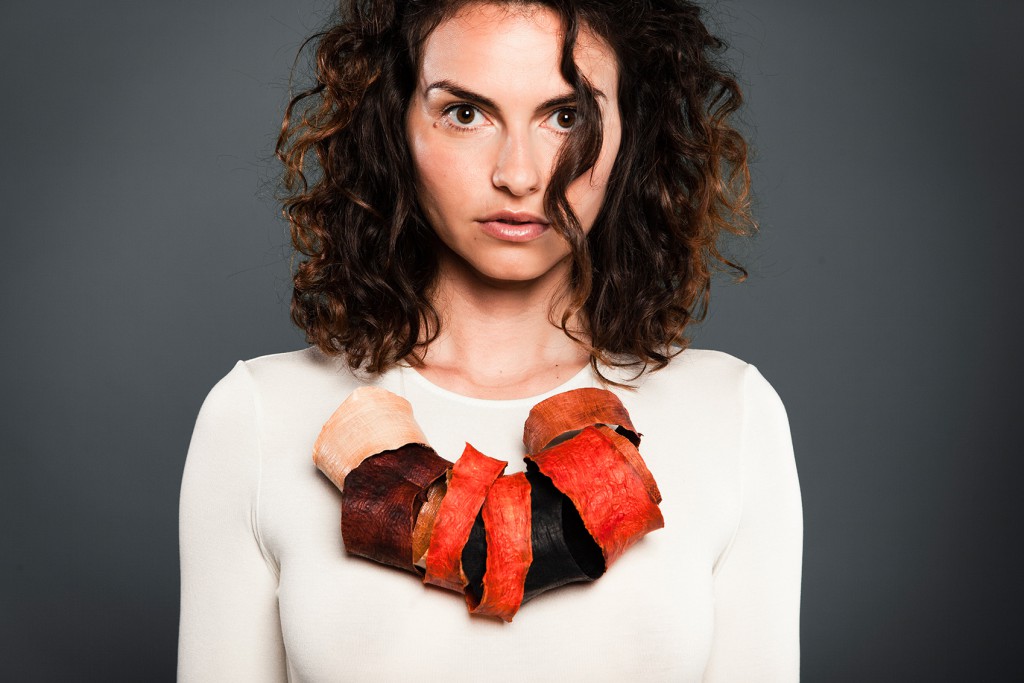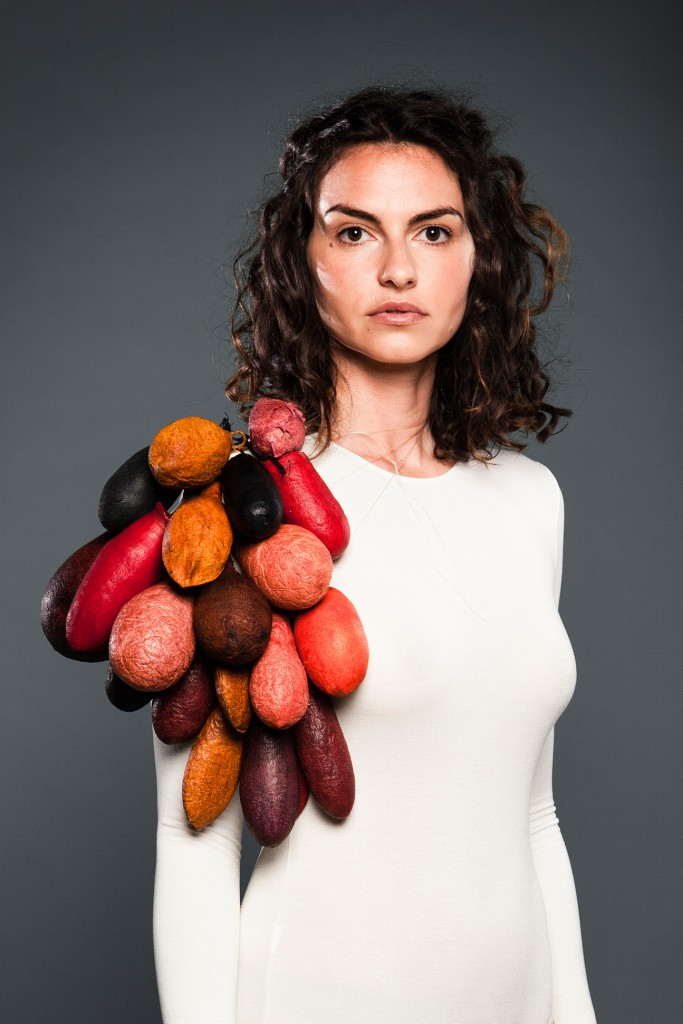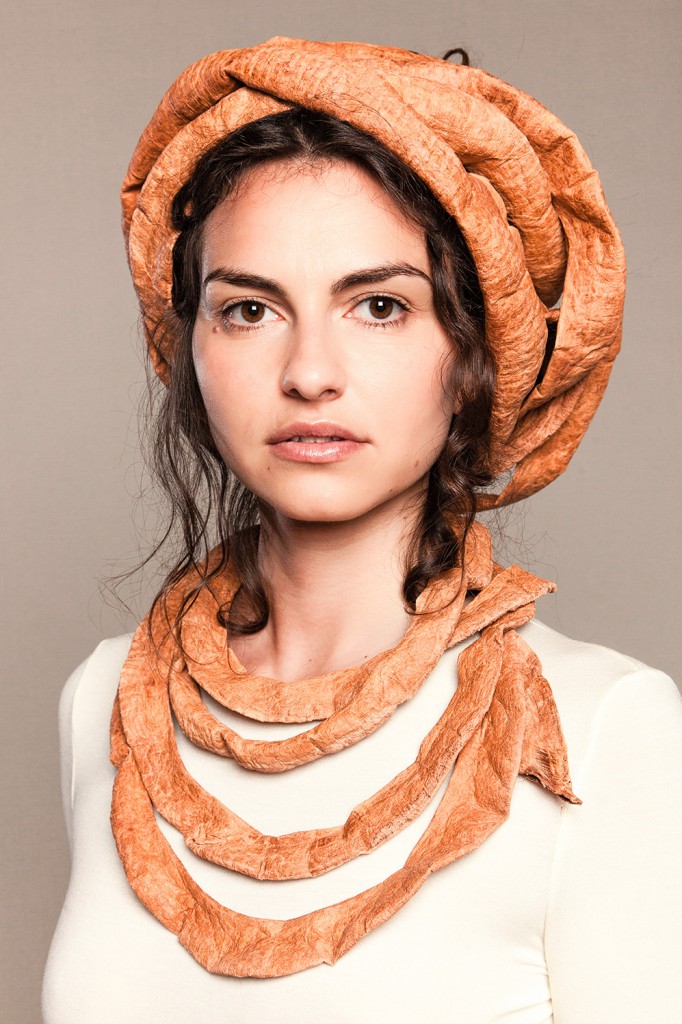
photocredits: Philip Kottlorz
Material background
The use of untanned inner skins has always been common and it was widely spread until the 20th century. Cleaned, they are easy to dry and turn to a papery material. Nowadays they merely serve as sausage casings but are increasingly getting replaced by artificial bowel.
The stable and impermeable bladder material serves as a lightweight and stretchable container for the transport of liquids, cheese, tobacco or documents. In medieval times they were also used as lining of windows, lampshades and lanterns. Medieval bladder pipe and bladder fiddle are examples for instruments, which used qualities of pig bladders. Before the oil paint tube was invented in 1841, artists used to store their paints in pig bladders. Children discovered the early balloon in a puffed up pig bladder. It was used in sports as an airtight membrane in footballs in early 19th century. In the still present tradition of the swabian-alemannic carnival you can find the “Saubloder”, a pig’s bladder tied to a stick, as a traditional piece of carnival culture.
Due to its tubular form, the raw animal bowel was used as swimming belt for soldiers. Until the 18th century, sheep bowel was used as a contraceptive. A less peaceful use was in weaponry, where, in dried and twisted form it served as a bowstring. Because of its stability it suited as a rope for pulleys, yarn to sew leather or as strings for plucked and string instruments. “Catgut”consists of sheep bowel which was used in medicine to close wounds and dissolved itself after some time. Inuits used the dried bowels of many sea mammals, such as sea lions, seals, whales and made good use of the characteristic to repel water in order to fabricate parkas. This material is both waterproof and breathable, making it highly suitable for a rain coat which was worn over the actual fur coat. The stripes of cut bowels were sewn together to form a coat. Apart from the raincoat, the material can also be found in the shamanic tradition of North America. Shamans wore robes of dried bowel for ritual ceremonies, as the rustling sound of the material supported their dances. The usage of the material was seen as a gift of the animal and protective properties were ascribed to it.
Tanning process
To preserve the skins they were tanned. The processing of raw animal skins into leather is called tanning at which tannins form a chemical compound with the collagen network of the skin. The designers choose the more environmentally friendly vegetable tanning process, which is much more time consuming than the common, but also controversial chrome tannin.
They contacted the leather company Breuninger in Schorndorf, manufacturer of usual leather using vegetable tanning agents. Breuninger kindly supported the project with their expertise and the provision of their premises.
Working process
At first, the innards are thoroughly cleaned of conjoined fat layers and blood inclusions. Then they are acidified with constant agitation in a liquor of dilute formic acid. For this purpose a mechanically operated barrel with wood knobs inside is used. Thus, the skin is well tumbled. Once the inner skins have reached the correct pH – value they are attached to strings and hung in the vegetable tan liquor. This is the dissolved tannin from the bark of acacia mimosa from Brazil as well as bark and trunk of the quebracho tree from Argentina. Initially the concentration of tanning agent in the liquor is still very low but is increased gradually. Therefore a uniform and continuous tanning of the skins is guaranteed. To see the progress of the tanning process you have to cut the leather because it can only be seen in the cross-section whether the skins are completely tanned or not. Depending on the thickness of the inner skins and the liquor concentration, the tanning process takes between one and two months. After tanning, the material can now be treated with different methods. When the brownish colour of bark tanning is desired, the skins are washed and lubricated with three different fats in the tanner barrel. Through oiling, the leather gets soft and flexible. Subsequently, the innards must be acidified again to fix the fats. If colouring is desired, the procedure is much more complex. Depending on the desired hue and intensity of colour up to two dyeing processes with previous oiling and acidification as well as subsequent oiling and thorough washing are necessary.
The drying plays an important role in the manufacturing process. The longer the leather is kneaded, the softer and more flexible it gets. To preserve the original shape of the innards, the individual parts are manually kneaded and pulled until they are dry.

